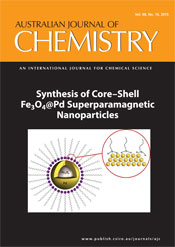
Australian Journal of Chemistry
Volume 68 Number 10 2015
CH15061New, Homochiral Synthons Obtained through Simple Manipulations of Enzymatically Derived 3-Halo-cis-1,2-dihydrocatechols

The illustrated and homochiral synthons are readily available through the application of novel rearrangement chemistries to certain enzymatically derived cis-1,2-dihydrocatechols.
CH15002Crystal Structure Studies towards the Synthesis and Applications of N-heterocyclic Carbene–Metal Complexes Derived from [2.2]Paracyclophane
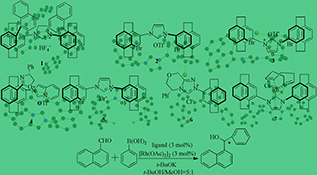
The crystal structures of six planar chiral NHC precursors and one NHC–Rh complex derived from [2.2]paracyclophane were described. The NHC–metal complexes were prepared and evaluated as ligands in the Rh-catalyzed asymmetric addition of phenyl boronic acid to 1-naphthaldehyde. The results were correlated to the single-crystal crystallographic studies.
CH15066A Carbon Nanodots-Based Fluorescent Turn-On Probe for Iodide
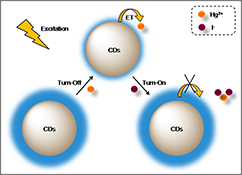
A carbon nanodots-based fluorescent turn-on probe was established to detect iodide sensitively and selectively. The fluorescence of carbon nanodots that was quenched by Hg2+ was restored and ‘turned on’ in the presence of iodide owing to the strong tendency to form a more stable complex.
CH15026Synthesis and Properties of Novel Borondipyrromethene (BODIPY)-Tethered Triphenylamine Conjugates
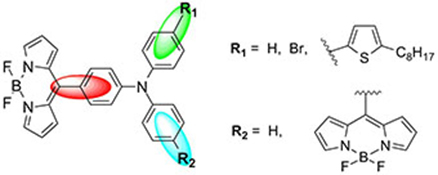
One or two BODIPY-tethered triphenylamine conjugates exhibit significant Stokes shift. The asymmetric mono-BODIPY substituted conjugates showed an electronic distribution imbalance due to the special 3D propeller shape of triphenylamine, while the symmetric bis-BODIPY substituted ones tend to a balanced electronic distribution.
CH14722Synthesis, Characterization, and Nanocatalysis Application of Core–Shell Superparamagnetic Nanoparticles of Fe3O4@Pd
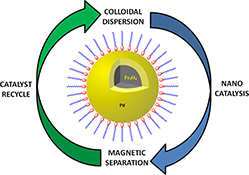
Core–shell superparamagnetic nanoparticles consisting of a magnetite (Fe3O4) core and a palladium (Pd0) shell, stabilized by oleylamine, were synthesized and characterized extensively. The catalytic activity and reusability of the nanoparticles in a Suzuki–Miyaura coupling reaction were investigated, obtaining promising results.
CH14736Solvent-Dependent Non-Linear Optical Properties of 5,5′-Disubstituted-2,2′-bipyridine Complexes of Ruthenium(II): A Quantum Chemical Perspective
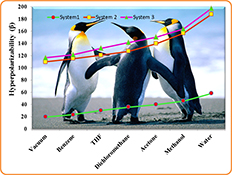
Solvent effects on non-linear optical properties of 5,5′-disubstituted-2,2′-bipyridine complexes of ruthenium have been studied. The results of theoretical investigation have shown that the non-linear optical properties have significantly increased with the increase in solvent polarity.
CH14672Tailoring of Morphology and Optical Properties of Bishydrazone-Capped ZnSe Nanorods
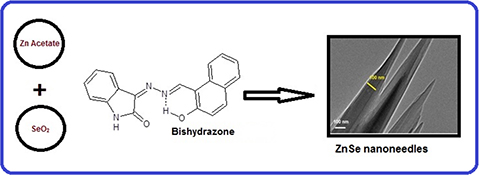
ZnSe nanorods have been synthesized by a wet chemical reaction method using bishydrazone as a surface capping agent. The structure, morphology, and the optical properties of the nanorods were investigated. The ZnSe nanorods have promising applications in blue emitters, solar cells, and sensors.
CH14720Tetracarboxyl-Functionalized Ionic Liquid: Synthesis and Catalytic Properties

Tetracarboxyl-functionalized biimidazolium-based ionic liquids with different anions have been synthesized and their catalytic properties tested for the synthesis of cyclic carbonates from CO2 and epoxides.
CH15047Kinetic Method Analysis of the Effect of cis- and trans-Hydroxylation on the Proton Affinity of Proline
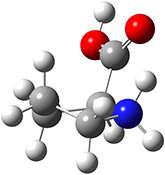
Cooks' kinetic method analysis shows that proton affinity of proline increases upon hydroxylation of the pyrrolidine ring. However, cis-4-hydroxyproline and trans-4-hydroxylproline have essentially the same proton affinity despite a differing extent of intermolecular interactions involving the proton. Density functional theory calculations suggest that polarizability provides a better diagnosis for proton affinity changes associated with chemical modifications of molecules.
CH14733Synthesis of Co1Cu2(BHTC)2 and Its Application in Adsorption Desulfurization
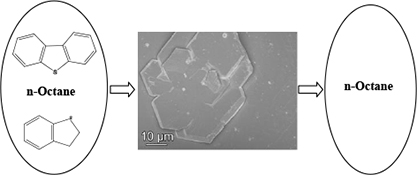
Co1Cu2(BHTC)2 was synthesized and used in adsorption desulfurization. It exhibits a hexagonal planar microstructure and phase structure of UMCM-150. This material exhibits a higher sulfur capacity for dibenzothiopene than for benzothiopene. In addition to the pore size and shape of the metal-organic framework, the metal active sites play an important role in the adsorption process.
CH15029Two Efficient One-Pot Approaches for Regioselective Synthesis of New 3-Arylpyridazino[4,3-c]quinolin-5(6H)-ones
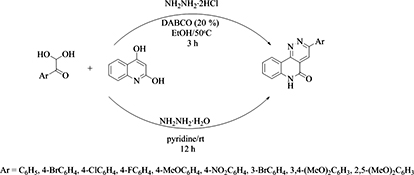
Two efficient regioselective approaches for the one-pot synthesis of 3-arylpyridazino[4,3-c]quinolin-5(6H)-one derivatives are reported. Both procedures feature high regioselectivity, mild reaction conditions, good to high yields, and operational simplicity.
CH14731Diglycidyl Esters Cross-Linked with Low Molecular Weight Polyethyleneimine for Magnetofection

Degradable polyethyleneimine (D-PEIs) were prepared by cross-linking diglycidyl esters with low molecular polyethyleneimine. Moreover, a type of biocompatible magnetic nanoparticles (MNPs) with negative charges was prepared to assemble with D-PEIs/DNA complexes via electrostatic interactions. The transfection efficiency and cytotoxicity of the magnetic ternary complexes were investigated.
CH15065Nematicidal Activities of Diamides with Diphenylacetylene Scaffold Against Meloidogyne Incognita
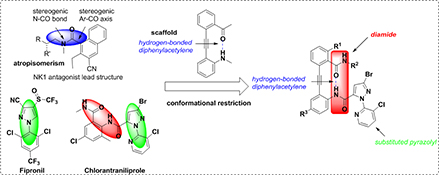
A series of novel diamides based on diphenylacetylene scaffold were designed and synthesised. The conformation of the amide was restricted through the ten-membered H-bonded ring. The bioassays indicated that most of the title compounds were endowed with good nematicidal activities at the concentration of 25 mg L–1.
CH15110Assembly and Properties of Four New Metal–Organic Complexes Based on 1,4-Naphthalenedicarboxylate: Effect of Four Bis-pyridyl-bis-amide Ligands with Diverse Spacers in the Structures
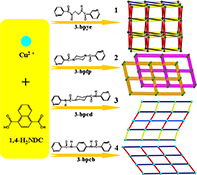
Four new CuII metal–organic complexes based on 1,4-naphthalenedicarboxylate and four bis-pyridyl-bis-amide ligands with different structures have been hydrothermally synthesized. The bis-pyridyl-bis-amide ligands with diverse spacers play an important role in the construction of four complexes with various structures. The thermal stabilities, fluorescence, and photocatalytic properties of complexes 1–4 have been reported.
CH15083Synthesis of Eu-Doped Bi2O3/CeO2 Composite with Enhanced Photocatalytic Activity by a Facile Sol–Gel–Calcination Route
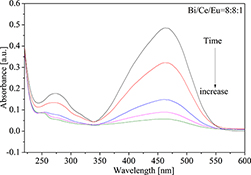
Eu-Doped Bi2O3/CeO2 composites can be synthesized by a facile sol–gel–calcination route. The as-prepared composites possessed smaller band gap and higher visible light response properties than Bi2O3/CeO2. The as-prepared composites exhibited enhanced photocatalytic activity towards the degradation of methyl orange under visible light irradiation.
CH15126Facile Synthesis of Hierarchical CuO Microspheres and their Gas Sensing Properties for NOx at Room Temperature
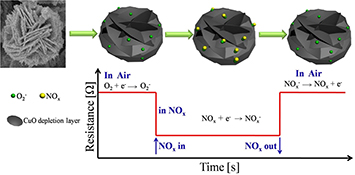
Hierarchical CuO microspheres have been successfully synthesised via a facile reflux method by changing the precursor concentration. The CuO-2 sensor exhibits a high NOx gas sensing performance to 97.0 ppm NOx at room temperature. The enhanced gas sensing could be ascribed to the well aligned microstructures and the improved conductivity of the CuO-2 sample.
CH15113Combination of Pyridinium and Isoquinolinium Ylides with Phenylisocyanate and Isothiocyanates: Synthesis, Characterisation, and X-Ray Crystal Structures of Mesoionic Monosubstituted 3-Oxo-Propanamides or Thioamides

Pyridinium ylides derived from 2-bromoacetophenone or methyl bromoacetate have been reacted with phenylisocyanate, phenyl- or methylisothiocyanate to afford the mesoionic monosubstituted 3-oxo-propanamides or thioamides, via self-protonation of the intermediate N-anion. A similar reaction of isoquinolinium ylides with phenylisocyanate under the same conditions or phenyisothiocyante produced the corresponding mesoionic compounds.
CH15144Syntheses of Cytosporones A, C, J, K, and N, Metabolites from Medicinal Fungi
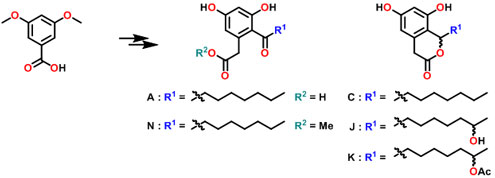
The syntheses of cytosporones A, (±)-C, and N and the first syntheses of cytosporones J and K are described. Key steps included homologation of a benzoic acid using Birch reductive alkylation conditions, acylation of the appropriate phenyl acetate derivative, and a selective reductive lactonization. The synthesized products were evaluated for their biological activity with all compounds displaying antimicrobial activity.
CH15094Synthesis and Properties of Amphipathic Poly(D,L-lactide-co-glycolide)-polyethylene glycol-poly(D,L-lactide-co-glycolide) Triblock Copolymers
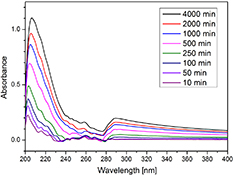
Amphipathic PLGA-PEG-PLGA triblock copolymers were synthesized and characterized. The sol–gel transition occurred at lower temperature with higher copolymer concentrations and mass ratios of d,l-LA/GA. The drug release from the hydrogel showed a higher initial release followed by a slower pattern up to 120 h and the mean retention time was ~50 h.
CH14655A Simple, One-Pot Synthesis of Trans-Substituted Spiro [5,5] undecane-1,5,9-triones with Aromatic Aldehydes and Meldrum's Acid as the Starting Materials

A simple, one-pot process for the construction of substituted spiro[5,5]undecane-1,5,9-triones, using aromatic aldehydes and Meldrum’s acid, and aniline as a catalyst, is reported. In contrast to previous literature, this method endows excellent diastereoselectivity to the trans-substituted products. The method is characterized by its simple operation, commercial availability of all materials, mild reaction conditions, and moderate-to-good chemical yields.
CH15116Indole-3-carbinol and 1,3,4-Oxadiazole Hybrids: Synthesis and Study of Anti-Proliferative and Anti-Microbial Activity

The paper illustrates the anti-proliferative and anti-microbial studies of novel well-characterized molecular entities bearing (2-(5-mercapto-1,3,4-oxadiazol-2-yl)-1-methyl-1H-indol-3-yl)methanol derivatives.
CH15123Thermoregulated Aqueous Biphasic Catalysis of Sonogashira Reactions
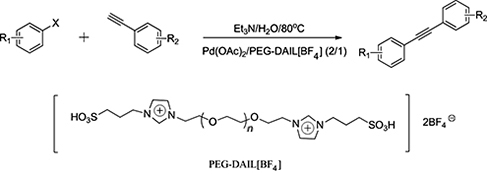
An environmentally friendly, water-based catalytic system for Sonogashira reactions is described, which allows separation of product and catalyst by a simple variation of temperature without the need for any organic solvent. The novel catalytic system exhibits high efficiency and excellent reusability. In addition, the Sonogashira reactions are performed in air using Pd(OAc)2 without a copper co-catalyst.



